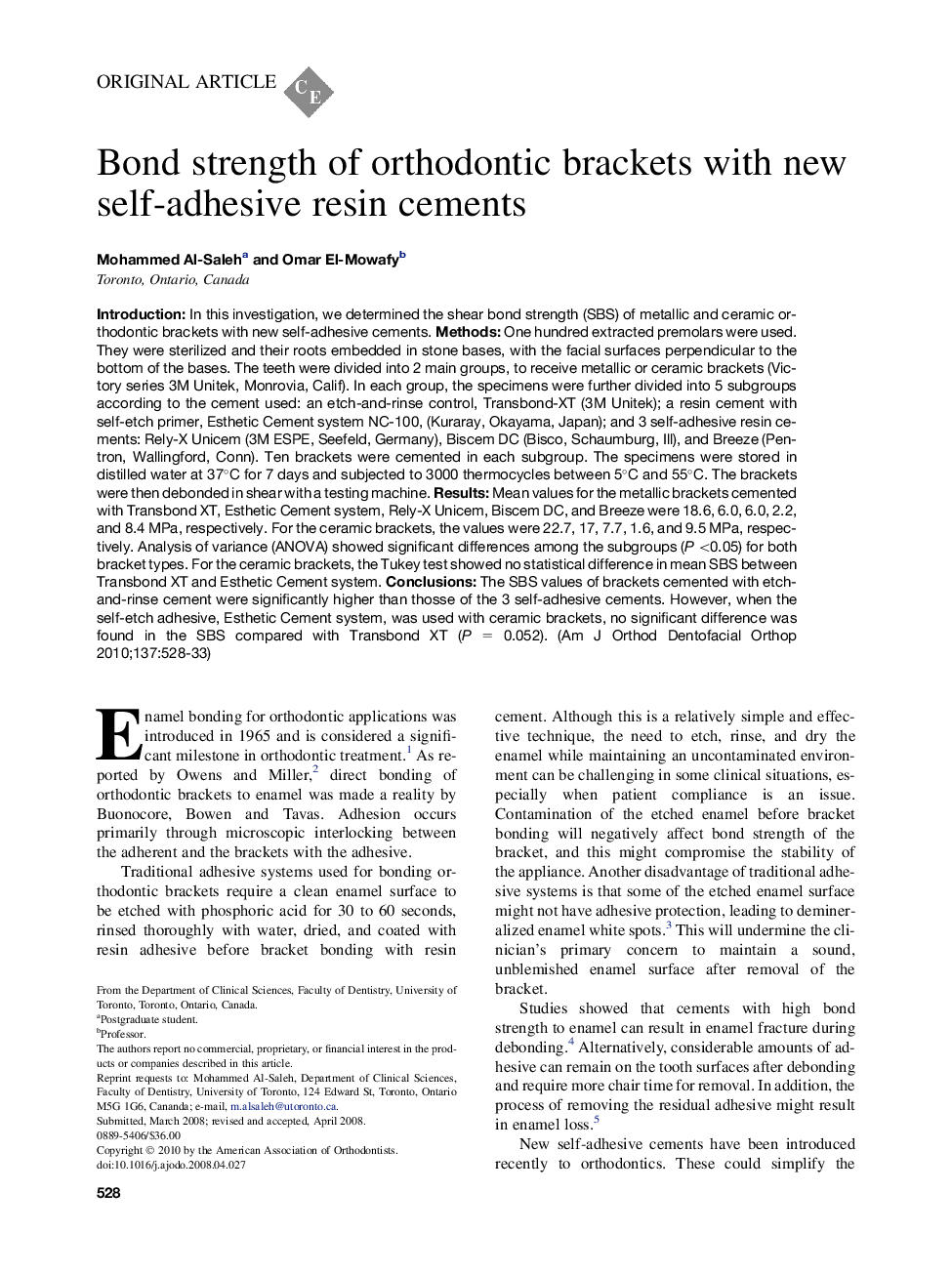| Article ID | Journal | Published Year | Pages | File Type |
|---|---|---|---|---|
| 3117661 | American Journal of Orthodontics and Dentofacial Orthopedics | 2010 | 6 Pages |
IntroductionIn this investigation, we determined the shear bond strength (SBS) of metallic and ceramic orthodontic brackets with new self-adhesive cements.MethodsOne hundred extracted premolars were used. They were sterilized and their roots embedded in stone bases, with the facial surfaces perpendicular to the bottom of the bases. The teeth were divided into 2 main groups, to receive metallic or ceramic brackets (Victory series 3M Unitek, Monrovia, Calif). In each group, the specimens were further divided into 5 subgroups according to the cement used: an etch-and-rinse control, Transbond-XT (3M Unitek); a resin cement with self-etch primer, Esthetic Cement system NC-100, (Kuraray, Okayama, Japan); and 3 self-adhesive resin cements: Rely-X Unicem (3M ESPE, Seefeld, Germany), Biscem DC (Bisco, Schaumburg, Ill), and Breeze (Pentron, Wallingford, Conn). Ten brackets were cemented in each subgroup. The specimens were stored in distilled water at 37°C for 7 days and subjected to 3000 thermocycles between 5°C and 55°C. The brackets were then debonded in shear with a testing machine.ResultsMean values for the metallic brackets cemented with Transbond XT, Esthetic Cement system, Rely-X Unicem, Biscem DC, and Breeze were 18.6, 6.0, 6.0, 2.2, and 8.4 MPa, respectively. For the ceramic brackets, the values were 22.7, 17, 7.7, 1.6, and 9.5 MPa, respectively. Analysis of variance (ANOVA) showed significant differences among the subgroups (P <0.05) for both bracket types. For the ceramic brackets, the Tukey test showed no statistical difference in mean SBS between Transbond XT and Esthetic Cement system.ConclusionsThe SBS values of brackets cemented with etch-and-rinse cement were significantly higher than thosse of the 3 self-adhesive cements. However, when the self-etch adhesive, Esthetic Cement system, was used with ceramic brackets, no significant difference was found in the SBS compared with Transbond XT (P = 0.052).
